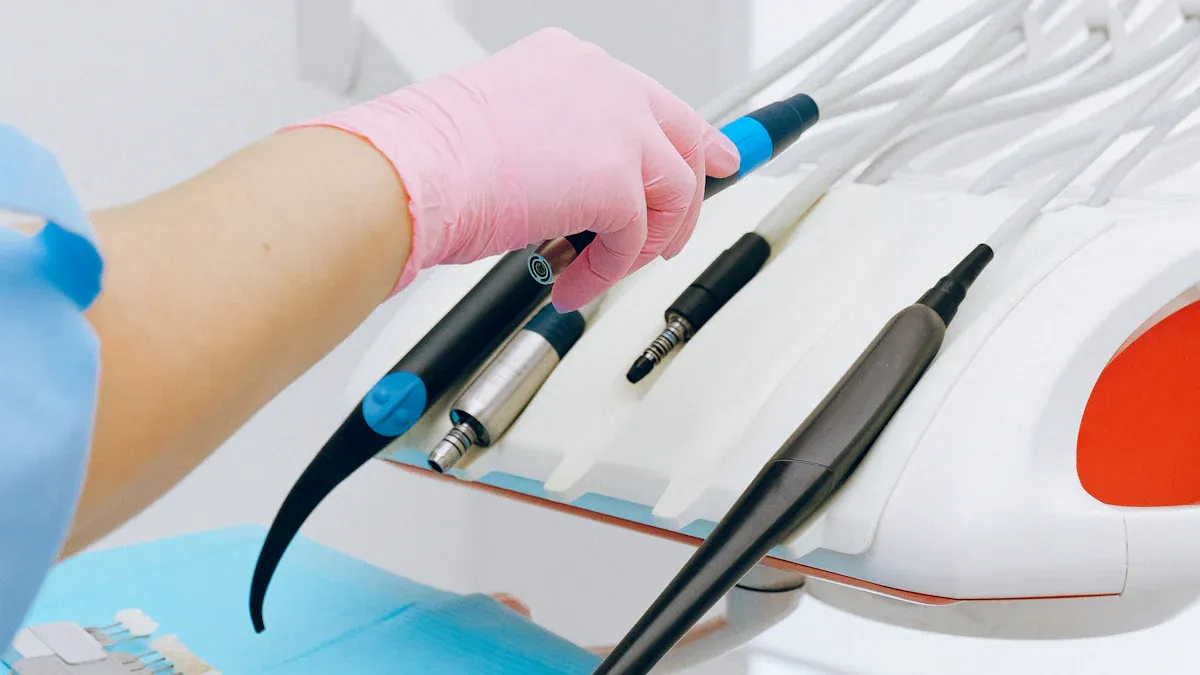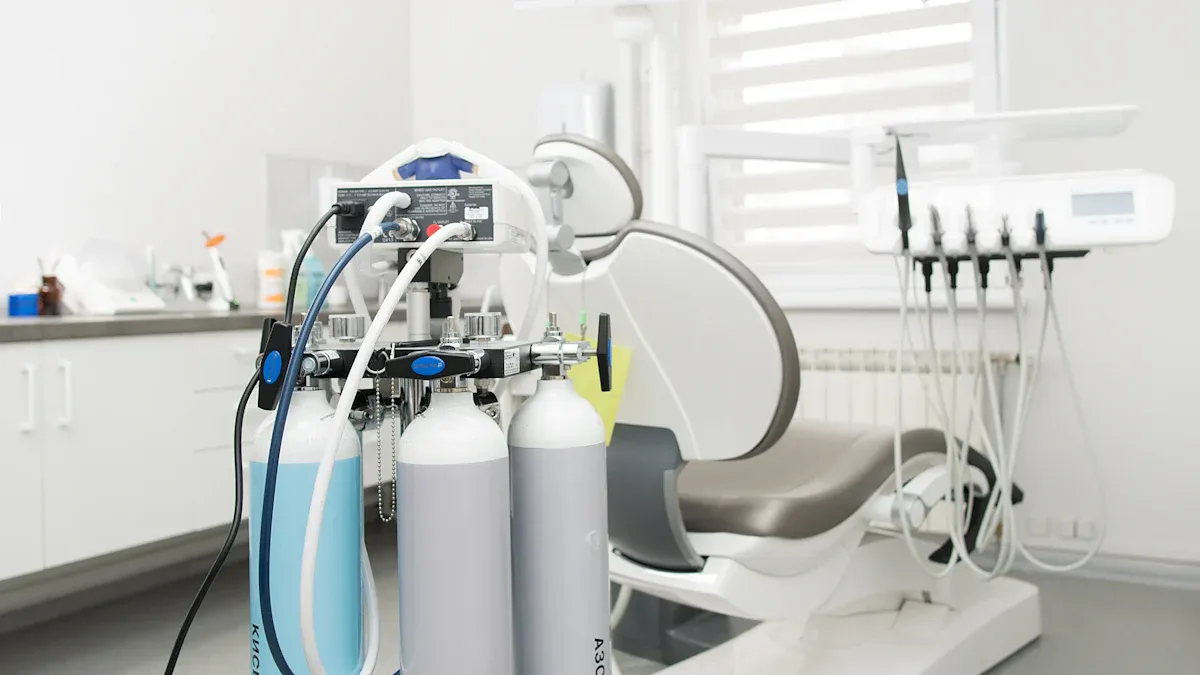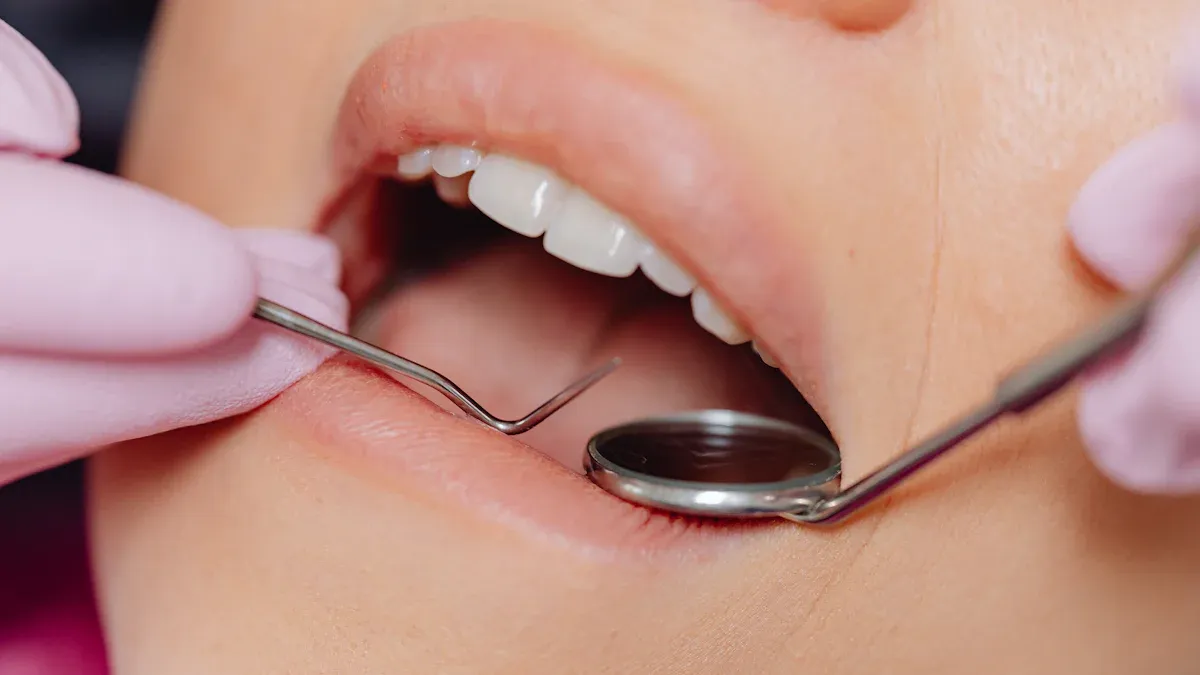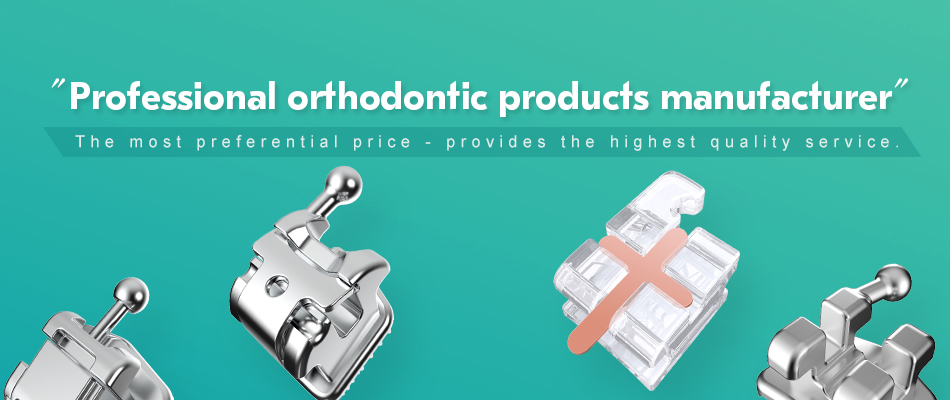
CE-certified orthodontic products play a vital role in modern dental care by ensuring safety and quality. These products meet strict European Union standards, guaranteeing their reliability for both patients and practitioners. The EU Medical Device Regulation (MDR) has introduced rigorous requirements to enhance patient safety. For example:
- Dental instruments must now be traceable to their sterilization process.
- Dentists using CAD/CAM technology face additional compliance obligations, including risk management systems.
Compliance with these standards protects patients and ensures dental clinics meet legal responsibilities, fostering trust and professionalism in the field.
Key Takeaways
- CE certification shows orthodontic products are safe and high-quality.
- Dental clinics should check labels and ask for documents to confirm CE certification.
- Regular checks help clinics find problems and follow EU MDR rules to keep patients safe.
- Buying from trusted suppliers lowers risks and improves patient care.
- Teaching staff about EU MDR rules helps everyone know how to keep things safe and high-quality.
What Are CE-Certified Orthodontic Products?

Definition and Purpose of CE Certification
CE certification is a mark of quality and safety recognized across the European Union. It signifies that a product complies with EU regulations, ensuring it meets health, safety, and environmental protection standards. For orthodontic products, this certification guarantees that they are safe for patients and effective in their intended use. Dental clinics rely on CE-certified orthodontic products to maintain high standards of care and build trust with their patients.
The purpose of CE certification extends beyond compliance. It also promotes consistency in product quality across the EU market. This ensures that orthodontic products, such as brackets and wires, perform reliably regardless of where they are manufactured or used.
CE Certification Process for Orthodontic Products
The CE certification process for orthodontic products involves several critical steps. Manufacturers must first understand the specific market requirements, including the need for CE marking in the EU. They must then ensure their products meet the essential safety and performance criteria outlined in the EU Medical Device Regulation (MDR). Collaborating with accredited third-party testing agencies is essential for rigorous evaluations of product compliance and quality.
Staying updated on regulatory changes is another key aspect of the process. Industry publications and legal experts provide valuable insights into compliance timelines and evolving standards. Once a product passes all evaluations, it receives the CE mark, signifying its readiness for the EU market.
Examples of CE-Certified Orthodontic Products
CE-certified orthodontic products encompass a wide range of tools and devices used in dental clinics. Examples include orthodontic brackets, archwires, and aligners. These products undergo stringent testing to ensure they meet the highest standards of safety and performance. For instance, orthodontic brackets produced by companies like Denrotary Medical are manufactured using advanced equipment and adhere to strict quality control measures. This ensures that dental professionals can rely on these products to deliver effective and safe treatments to their patients.
Understanding EU MDR Standards

Key Requirements of EU MDR for Orthodontic Products
The EU Medical Device Regulation (MDR), officially known as EU 2017/745, establishes a comprehensive framework for regulating medical devices, including orthodontic products. This regulation became mandatory across all EU countries in May 2021. It aims to enhance safety, support innovation, and ensure consistent quality.
Key requirements include:
- No Grandfathering Rule: Devices approved under the previous Medical Device Directive (MDD) must undergo new conformity assessments to meet MDR standards.
- Unique Device Identifier (UDI): All orthodontic products must include a UDI for improved traceability.
- Sterilization Control: Dental instruments must demonstrate traceability to their sterilization processes.
These requirements ensure that orthodontic products meet stringent safety and performance standards, protecting patients and practitioners alike.
How EU MDR Ensures Safety and Performance
The EU MDR enhances safety and performance through robust regulatory measures. Manufacturers must provide clinical evidence to demonstrate the safety and effectiveness of their products. This includes documenting the entire life cycle of a device.
The regulation also mandates a Quality Management System (QMS) and a Post-Market Surveillance (PMS) system. These systems monitor product performance and address potential risks. For example, orthodontic products must comply with ISO 14971:2019 standards for risk management. By requiring these measures, the EU MDR minimizes the likelihood of adverse events, such as those seen in past medical device scandals.
Recent Updates in EU MDR Impacting Dental Clinics
Several updates in the EU MDR directly affect dental clinics. The transition from the MDD to the MDR, effective since May 2021, requires all previously approved devices to be re-evaluated by May 2024. This ensures compliance with the latest standards.
The introduction of the UDI system enhances product traceability, particularly for Class III implantable devices. Additionally, dentists using CAD/CAM technology are now classified as manufacturers. They must implement quality management systems and comply with MDR obligations.
The EUDAMED database represents another significant update. This platform collects and processes information about medical devices, improving transparency and information flow. These changes emphasize the importance of compliance for dental clinics using CE-Certified Orthodontic Products.
Why Compliance Matters for Dental Clinics
Risks of Non-Compliance with EU MDR
Non-compliance with EU MDR standards poses significant risks for dental clinics. Regulatory violations can lead to severe legal consequences, including fines, penalties, or even the suspension of operations. Clinics may also face reputational damage, which can erode patient trust and impact long-term success. Additionally, using non-compliant orthodontic products increases the likelihood of adverse events, such as device failures or patient injuries, which could result in costly lawsuits.
Failure to meet EU MDR requirements can also disrupt clinic operations. For example, the absence of a Unique Device Identifier (UDI) on orthodontic products may hinder traceability, complicating inventory management and patient care. Clinics that neglect to implement a Quality Management System (QMS) or Post-Market Surveillance (PMS) system may struggle to address safety concerns effectively, further exposing themselves to regulatory scrutiny.
Benefits of Using CE-Certified Orthodontic Products
Using CE-Certified Orthodontic Products offers numerous advantages for dental clinics. These products meet stringent safety and performance standards, ensuring reliable and effective treatments. Patients benefit from improved outcomes, while clinics gain a reputation for quality care. CE certification also simplifies compliance with EU MDR requirements, reducing the administrative burden on clinics.
Clinics that prioritize CE-certified products can streamline their operations. For instance, the traceability of these products enhances inventory management and supports sterilization control. This ensures that all instruments meet hygiene standards, minimizing the risk of infections. Additionally, CE-certified products often come with comprehensive documentation, making it easier for clinics to maintain regulatory compliance.
Legal and Ethical Responsibilities of Dental Clinics
Dental clinics have both legal and ethical obligations to comply with EU MDR standards. Legally, clinics must ensure that all medical devices, including orthodontic products, meet regulatory requirements. This includes implementing internal controls, conducting regular audits, and maintaining technical documentation. Clinics must also designate a Person Responsible for Regulatory Compliance (PRRC) to oversee adherence to these standards.
Ethically, clinics must prioritize patient safety and confidentiality. Upholding patient privacy, especially with electronic health records, is essential. Clinics must also obtain informed consent for all treatments, using clear and understandable language. By fostering a culture of integrity and transparency, clinics can build trust with their patients and contribute to the overall advancement of dental care.
Ensuring Compliance in Your Dental Clinic
Steps to Verify CE Certification of Products
Verifying the CE certification of orthodontic products is essential for ensuring compliance with EU MDR standards. Dental clinics should begin by checking the product labeling. The CE mark must be clearly visible, along with the identification number of the notified body that assessed the product. Clinics should also request the Declaration of Conformity from the manufacturer. This document confirms that the product meets all applicable regulatory requirements.
Reviewing the technical documentation is another critical step. Each product should have a Clinical Evaluation Report (CER) and supporting evidence of safety and performance. Clinics can also consult the EUDAMED database to verify the product’s registration and compliance status. Regularly updating these checks ensures that all orthodontic products used in the clinic remain compliant with current regulations.
Choosing Reputable Suppliers for Orthodontic Products
Selecting reputable suppliers is vital for maintaining high standards in dental care. Clinics should prioritize suppliers that comply with industry regulations, such as CE marking in the EU or FDA approval in the U.S. Third-party testing agencies play a crucial role in verifying the quality and compliance of products. Clinics should inquire about these certifications during the supplier selection process.
Key performance indicators (KPIs) can help assess a supplier’s reliability. Metrics like yield, manufacturing cycle time, and changeover time provide insights into their production efficiency and flexibility. Setting clear quality standards, such as Six Sigma’s defect rate or Acceptable Quality Level (AQL), ensures consistent product quality. Partnering with suppliers who meet these criteria reduces compliance risks and enhances patient safety.
Training Staff on EU MDR Compliance Requirements
Training staff on EU MDR compliance is a proactive way to ensure adherence to regulations. Clinics should organize workshops and training sessions to educate employees about the latest MDR updates. Topics should include the importance of CE certification, the role of Unique Device Identifiers (UDI), and the requirements for maintaining technical documentation.
Practical training sessions can also improve staff understanding of compliance procedures. For example, employees can learn how to verify CE certification, manage sterilization traceability, and implement risk management systems. Regular training not only enhances staff competence but also fosters a culture of compliance within the clinic.
Conducting Regular Compliance Audits and Documentation
Regular compliance audits play a crucial role in ensuring that dental clinics adhere to EU MDR standards. These audits help identify gaps in processes, verify product certifications, and ensure that all orthodontic devices meet regulatory requirements. Clinics that conduct routine audits can proactively address potential issues before they escalate into legal or safety concerns.
To perform an effective compliance audit, clinics should follow a structured approach:
- Create an Audit Checklist: Include key areas such as product certifications, sterilization records, and staff training logs.
- Review Technical Documentation: Verify that all orthodontic products have up-to-date Clinical Evaluation Reports (CERs) and Declarations of Conformity.
- Inspect Inventory: Ensure that all devices carry the CE mark and meet traceability requirements, such as the Unique Device Identifier (UDI).
- Evaluate Processes: Assess sterilization procedures, risk management systems, and post-market surveillance activities.
Tip: Assign a dedicated compliance officer to oversee the audit process. This ensures accountability and consistency in maintaining regulatory standards.
Documentation is equally important in demonstrating compliance. Clinics must maintain detailed records of audits, including findings, corrective actions, and follow-up measures. These records serve as evidence during inspections by regulatory authorities. They also help clinics track their progress in meeting EU MDR requirements.
A well-documented compliance system not only ensures legal adherence but also builds trust with patients. Clinics that prioritize transparency and accountability foster a reputation for quality care. By integrating regular audits and thorough documentation into their operations, dental clinics can confidently navigate the complexities of EU MDR compliance.
CE-Certified Orthodontic Products play a crucial role in ensuring patient safety and maintaining regulatory compliance. These products meet stringent EU MDR standards, which uphold the quality and reliability of dental care. By adhering to these regulations, dental clinics can protect their patients and foster trust in their services. Prioritizing compliance not only fulfills legal obligations but also demonstrates a commitment to professional excellence. Clinics that embrace these practices contribute to safer, more effective orthodontic treatments and set a benchmark for quality in the industry.
FAQ
What does the CE mark on orthodontic products signify?
The CE mark indicates that a product complies with EU safety, health, and environmental standards. It assures dental clinics and patients that the product meets strict regulatory requirements and performs as intended.
Tip: Always verify the CE mark and accompanying documentation before purchasing orthodontic products.
How can dental clinics ensure compliance with EU MDR?
Dental clinics can ensure compliance by verifying CE certification, maintaining proper documentation, and conducting regular audits. Training staff on EU MDR requirements and choosing reputable suppliers also play a crucial role in meeting regulatory standards.
Are CE-certified products mandatory for dental clinics in the EU?
Yes, CE-certified products are mandatory for dental clinics in the EU. These products meet the stringent safety and performance standards outlined in the EU MDR, ensuring patient safety and legal compliance.
What is the Unique Device Identifier (UDI), and why is it important?
The UDI is a unique code assigned to medical devices for traceability. It helps clinics track products throughout their lifecycle, ensuring proper inventory management and patient safety.
Note: The UDI system is a key requirement under the EU MDR.
How often should dental clinics conduct compliance audits?
Dental clinics should conduct compliance audits at least annually. Regular audits help identify gaps, verify product certifications, and ensure adherence to EU MDR standards. Frequent reviews minimize risks and maintain high-quality care.
Emoji Reminder:
Post time: Mar-29-2025


